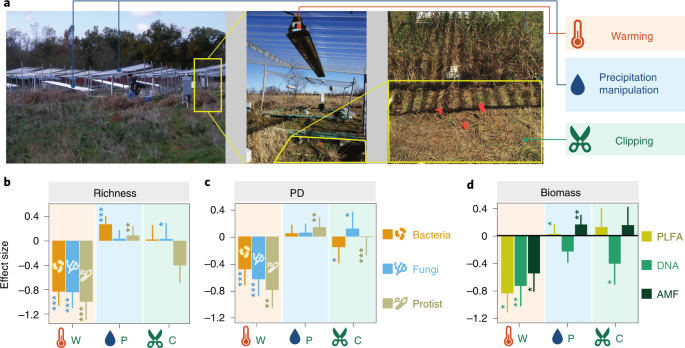HernanC
Moderator
This should come as no surprise, but researchers recently found in a 7-year study that increased ambient temperatures (and causally, soil temperatures), decreased soil moisture, and decreasing soil biomass results in a reduction of microbial diversity in grasslands.
This is one of my biggest concerns when laying black tarps to solarize my vegetable fields in the Summer before the Fall planting. Yes, I'm suppressing weeds (bermudagrass does not die), killing soil-borne pathogens, and insect pests, but how much am I harming the soil microbiome?
As a precaution, I usually add compost before each planting (3 times a year), except for the Summer cover crops. The cover crop residue isn't removed, rather it is flail mowed and tilled into the soil right before Fall planting. Further, I inoculate cover crop seeds every ~3-4 years with mycorrhiza. Finally, I irrigate (crops don't like drought) exclusively with drip tape. I'm not sure if that is enough to counteract the effects of solarization (temps reach well over 125 F under the tarp).
Let me know if you have an answer on this subject! I think the Hub of Prosperity and UTRGV in the Rio Grande Valley may be doing research on this topic. I'd like to hear them chime in here.

 www.nature.com
www.nature.com
This is one of my biggest concerns when laying black tarps to solarize my vegetable fields in the Summer before the Fall planting. Yes, I'm suppressing weeds (bermudagrass does not die), killing soil-borne pathogens, and insect pests, but how much am I harming the soil microbiome?
As a precaution, I usually add compost before each planting (3 times a year), except for the Summer cover crops. The cover crop residue isn't removed, rather it is flail mowed and tilled into the soil right before Fall planting. Further, I inoculate cover crop seeds every ~3-4 years with mycorrhiza. Finally, I irrigate (crops don't like drought) exclusively with drip tape. I'm not sure if that is enough to counteract the effects of solarization (temps reach well over 125 F under the tarp).
Let me know if you have an answer on this subject! I think the Hub of Prosperity and UTRGV in the Rio Grande Valley may be doing research on this topic. I'd like to hear them chime in here.

Reduction of microbial diversity in grassland soil is driven by long-term climate warming - Nature Microbiology
Soil microbes control the cycling of carbon, but how these communities will respond to climate changes is unknown. Here, 7 years of artificial warming decreased microbial richness and diversity, driven mostly by soil moisture loss.





